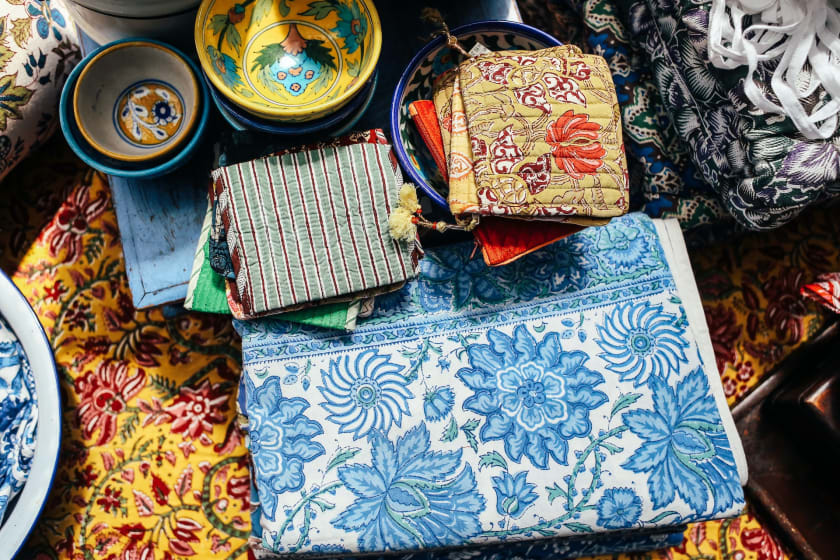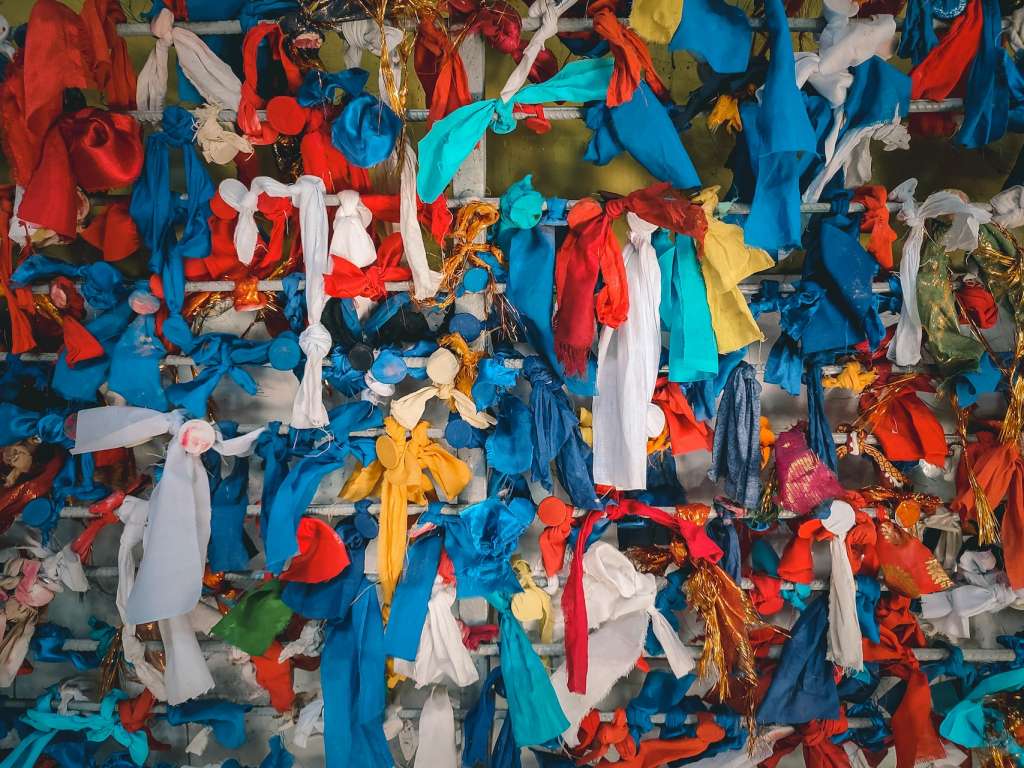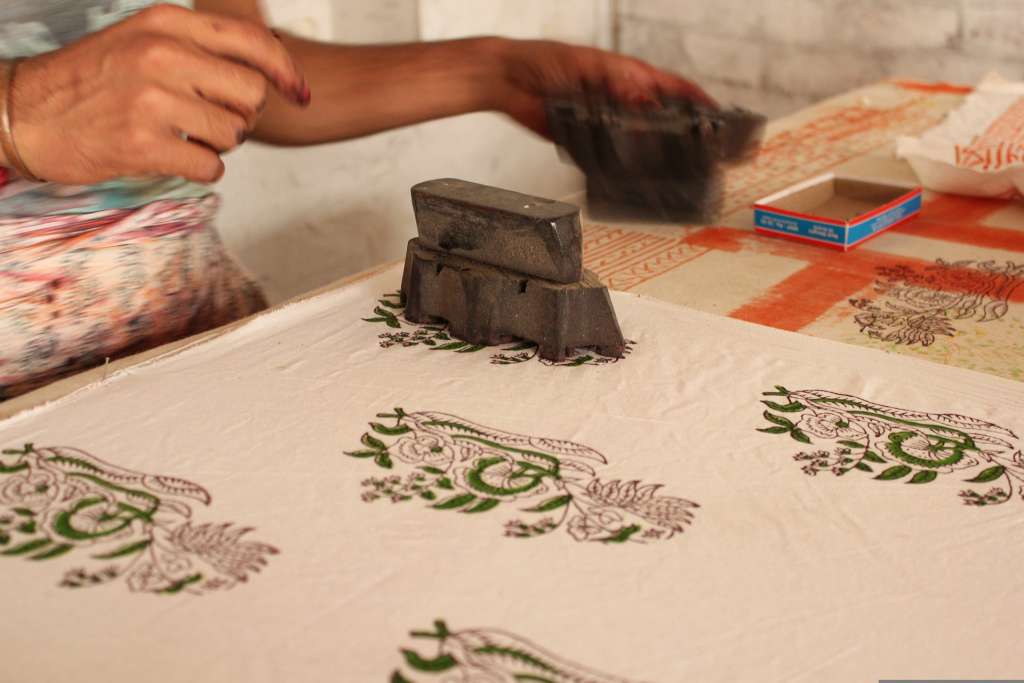How To Choose Right Method For Garment Printing?



Scalability, profit and quality are all directly related to choosing the correct garment printing method. Unfortunately, apparel manufacturing has no such thing as ”the best printing method.” It all depends on the desired output. Over the years, technology has advanced such that each printing method has advantages. This guide breaks down the various garment printing techniques available in the market today, along with their pros and cons. This handy guide makes it easy for you.
Things to Consider Before Choosing a Garment Printing Method
- MOQ/Units
- Material
- Color of fabric
- The complexity of the design
- Size of the print
- Quality & durability
- Turnaround Time
Printing Techniques - How to Choose the Correct Method

How it works: Screen printing involves using a mesh through which ink is pushed onto the fabric. The product is then moved to a flash unit for drying. This method produces durable, vibrant prints, thanks to thick inks.
Ideal for: Mass production of simple designs with few colors, e.g., geometric/text motifs on a T-shirt.
Pros:
- Screen printing inks can be matched to Pantone shades, ensuring true-to-life prints
- The method is compatible with most fabrics, owing to the availability of a wide variety of mesh types and inks. However, it’s most commonly used with cotton or polyester garments.
- With special inks, the technique can be used to produce glow-in-the-dark, UV, glitter and textured-finish prints.
Cons:
- Each color in the design requires a different mesh, and, therefore, a new pass. This means that the complexity of the design affects the cost and turnaround time.
- The technique is inappropriate for designs with minute details, shading, and tonal transitions.
- Sample production is not possible as each mesh is custom-made to the design.
Direct To Garment (DTG) Printing
How it works: A relatively new technology, DTG uses inkjet printers to produce photographic prints on garments. The ink gets embedded into the fibers, creating a soft finish.
Ideal for: Complex designs and small order quantities requiring quick turnaround times, e.g. custom-made T-shirts for corporate events or special occasions.
Pros:
- The technique is best suited for printing photos or designs with tonal transitions, especially on white or light-colored T-Shirts.
- The setup is not complicated, so it’s easy to achieve quick production times for small units.
- Sample production is possible.
Cons:
- With DTG prints, choosing a trusted vendor with a high-quality printer is crucial. Else, the results will be dull or subpar. Note that it’s impossible to color match the print to Pantone shades.
- When printing over a dark-coloured garment, a white pass is necessary. It can significantly affect the output if not done by a trusted manufacturer.
- The method is only suitable for products with high cotton percentage. The technology for printing on synthetic fabrics is new.
Vinyl Printing
How it works: Also known as CAD-cut printing, this technique uses CAD software to transfer your design onto vinyl. The vinyl is then laser-cut to the desired shape and heat-transferred onto the garment.
Ideal for: Printing small, simple, customized designs in small batches, e.g., jersey numbers on sports uniforms.
Pros:
- Vinyl printing is ideal for customized designs, such as printing names and job designations.
- The technique produces durable prints with no cracking
- Sample production is possible.
Cons:
- Heat transfer reduces the flexibility of the fabric, so it’s not ideal for large prints.
- This process is typically more time-consuming than DTG printing
- It’s not possible to match Pantone (PMS) colors.
Digital Transfer Printing
How it works: Similar to vinyl printing, this technique also uses the heat transfer method. Here though, the base on which the design is printed is a special type of paper rather than vinyl.
Ideal for: Printing full-color, complex motifs in small or medium-size batches e.g., slogans or logos on a T-shirt
Pros:
- Digital transfer printing can be used on a variety of materials, including cotton, mixed fabrics, polyester and nylon.
- The technique produces durable, high-quality prints.
- Although Pantone color matching is not possible, you’ll get good results even with complex designs using this method
- This technique can test samples or a small batch before a popular design can be moved to screen printing for larger productions.
- A significant advantage of digital transfer print is logistics. For offshore shipments, manufacturers typically supply just the printed sheets. The heat transfer can then be done locally. It reduces the burden of bearing shipping costs.
Cons:
- The logo/motif sits on top of the fabric and has a plastic-y feel to it
- This method is not suitable for fabrics that are sensitive to heat
- Digital Transfer printed apparel are not as long-lasting as screen-printed apparel.
Dye Sublimation Printing
How it works: This printing method also uses the heat transfer technique. However, here the ink fuses to the fabric giving a soft feel.
Ideal for: All-over prints or complex designs on polyester fabric, e.g., brand merchandise
Pros:
- Dye sublimation is highly popular as you can reproduce all-over prints on the front and back of your garment once it’s sewn and ready for print.
- The technique produces durable prints and offers unlimited design complexity and colors options.
- Prints will not crack or deteriorate
- This technique may run samples or small batches of all-over print designs before scaling production using other methods.
Cons:
- This technique works well only with 100% polyester fabrics
- Dye sublimation printing may not produce optimum results on dark fabrics
- Folded areas such as side seams or armpits will remain unprinted in all-over designs
Other Garment Printing Techniques

Discharge printing
Unlike all the techniques mentioned above, discharge printing removes the garment's natural color. Instead, a water-based solvent ink dissolves the apparel's natural color in the design's shape and soaks into the fabric in the desired area. This technique is excellent for printing on black, grey or dark blue apparel.
Tie-dye and batik printing
Both these methods use special techniques to produce unique designs. In the case of tie-dye printing, threads are used to cover areas that do not require printing. With batik prints, wax covers the areas that do not require inking.
Foil printing
Foil printing uses the heat transfer technique to apply laser-cut foil onto the garment. This method creates glimmering designs that stand out. However, note that foil printing is not durable.
Cut & Sew
Unlike other printing methods mentioned above, cut and sew manufacturing refers to creating garments out of fabric rolls that are already printed. This method offers the most control over creativity, quality, and consistency. It is most commonly used for mass manufacturing all-over print designs.
Conclusion
With apparel manufacturing, the permutations and combinations of choosing the proper techniques, fabrics, and vendors can seem daunting. Especially when it’s time to scale from small units to mass manufacturing techniques, achieving the desired results requires complete know-how of the industry’s functioning at large. Fashinza makes it easy to scale your T-shirt printing company or apparel manufacturing business with ease by connecting you to verified suppliers. Moreover, you can also track all your production batches in real-time. Choose Fashinza’s tech-enabled production management platform and run your apparel manufacturing business with ease.



















